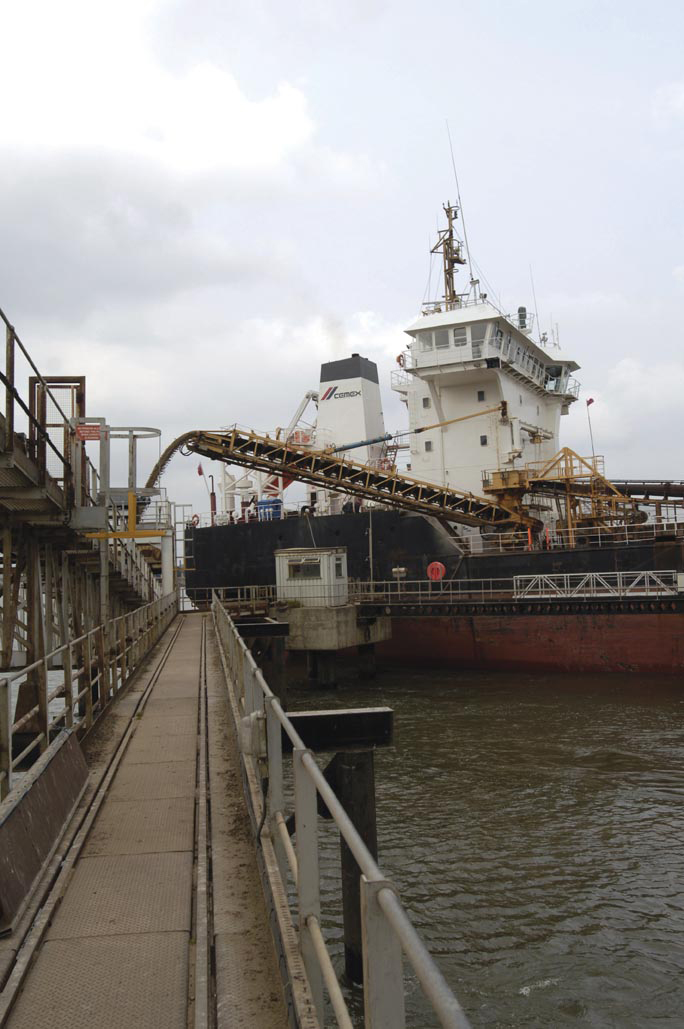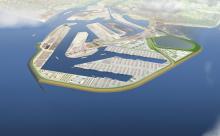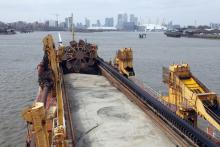
Marine aggregates could offer the potential in meeting the demand for sand and gravel in Europe and sidestep the land use issues facing conventional quarries
In terms of aggregate resources, marine aggregates are relatively new for many countries in Europe but this relatively untapped resource offers an alternative approach to meeting demand. Land-based materials have been extracted by man for millennia but the potential for ocean-based materials has only started to be recognised in the last 50 years.
Further adding to the benefit of marine materials is the ability to map and selectively extract aggregates to minimise environmental impact and move production away from the land. This, combined with wide availability, means that many coastal countries are now considering how further exploiting the potential of their marine reserves to meet their national needs.
The UK already has a well developed marine aggregates market with extraction off the south and east coasts meeting around a third of regional demand in London and the south east. The added benefit of these materials is that they can be delivered directly into the London market on the River Thames, reducing congestion within the city. Each dredger can also deliver the equivalent of 250 20tonne lorry loads in one go and it is estimated that around 18,000tonnes (900 truck loads) is delivered into London this way each day.
Marine-won material will play a key role in construction work for the 2012 London Olympics meeting its sustainability targets - it is estimated that around 1.1million tonnes of marine sand will be used during the project. The reduced reliance on primary aggregates from land-based quarries and waterborne delivery means that the Olympic Development Authority can more easily fulfil its commitment to delivery of at least 50% of the aggregates by sustainable modes of transport.
But the UK is not alone in its use of such aggregate resources - France, the Netherlands and Italy also have well established markets for marine aggregates and the market in Belgium is also developing. Finland and Ireland, among other countries in Europe, are also beginning to investigate the potential of their offshore resources.
Detailed impact assessments are needed before licenses for marine extraction can be granted and these look at both biological and archaeological issues. The impact not just on the extraction area, but also on the surrounding area in terms of creation of a 'turbid plume' formed by sediments suspended in the water column by the dredging operations, or the deposition of fine-grained sediments needs to be considered.
Modern survey techniques and computer modelling allow these factors to be fully considered. Nonetheless, the UK generally adopts a conservative or precautionary approach when granting extraction rights.
Careful controls are needed to ensure extraction does not adversely impact on coastal erosion but specialist dredgers equipped with hi-tech pumps and GPS technology mean that extraction areas can be accurately operated. Extraction sites are generally located 8km offshore and in at least 20m depth of water. Monitoring is also carried out during and after the extraction in sensitive areas to ensure no long term damage is being caused.
According to the British Marine Aggregates Association, re-colonisation of the seabed begins immediately after the extraction is completed and the seabed is biologically similar within two to 10 years.
Although marine-won aggregates have the potential to help meet demand for coastal projects and other schemes, they are not suitable for all construction work. In addition, once the material is landed it is subject to the same transportation costs as land-won aggregates so will never replace conventional quarries, but could provide a useful alternative.







